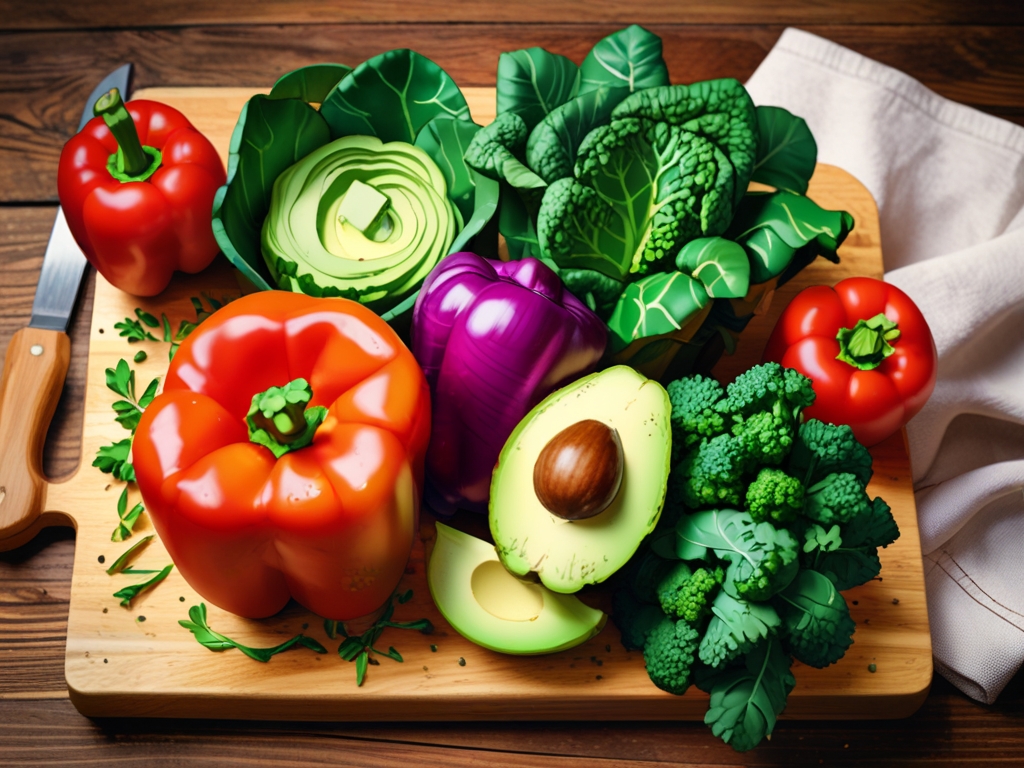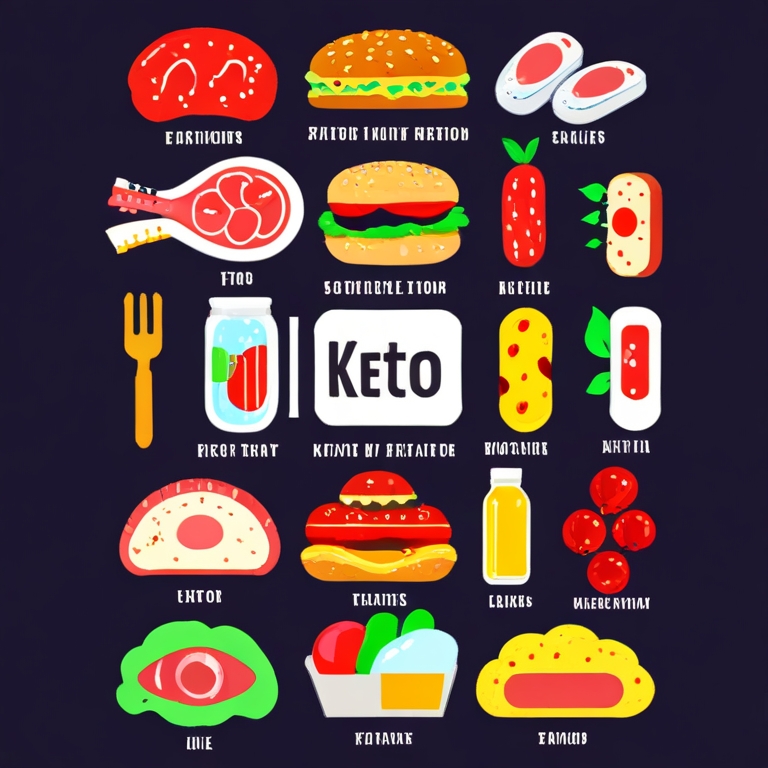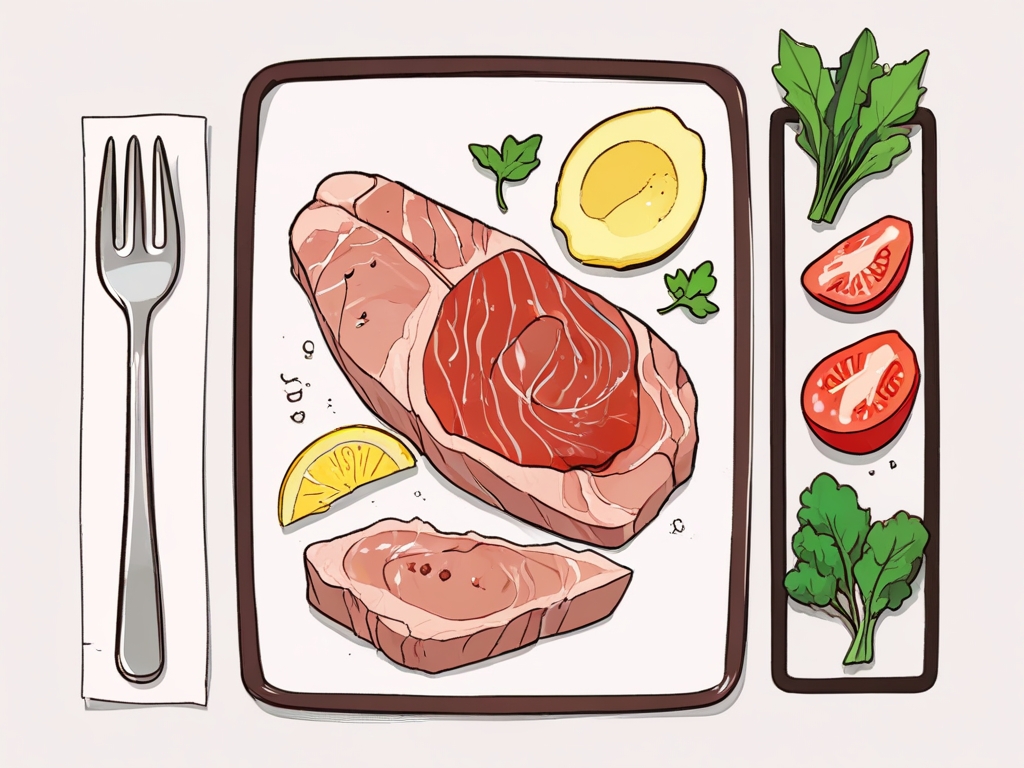Embarking on a keto journey can feel like stepping into a whole new world. With its emphasis on low-carb eating, the ketogenic lifestyle offers not just weight loss but potential health benefits that go beyond the scale. However, diving headfirst without an understanding of the essential keto rules can lead to confusion and frustration. The good news? We’re here to demystify these guidelines and help you navigate your way through the delightful (and delicious) realm of keto.
Imagine saying goodbye to those pesky cravings, all while enjoying rich, satisfying meals. Sounds dreamy, right? But here’s where knowing your keto diet guidelines comes into play. Understanding the basic principles not only keeps you in check but also enhances your chances of success. It’s like having a roadmap through an enchanting forest – thrilling but much safer with a guide!
The core idea behind the keto diet is to shift your body’s energy source from glucose to fat—a process that places you in a state of ketosis. This metabolic magic doesn’t just help with weight management; studies have shown improvements in blood pressure and overall health when following this high-fat diet approach source. So let’s dig into some of the crucial keto rules that will set you on the path to success:
The Essential Keto Rules
- Keep It Low-Carb: Aim for about 20-50 grams of net carbs per day. This is fundamental for reaching ketosis.
- Prioritize Healthy Fats: Include healthy fats like avocados, nuts, seeds, and olive oil into your meals.
- Moderate Protein Intake: While protein is essential, too much can kick you out of ketosis. Balance is key!
- Avoid Sugars and Refined Carbs: This includes sneaky sugar lurking in sauces and condiments—be vigilant!
- Stay Hydrated: Drinking plenty of water helps manage hunger and supports overall health.
Your keto adventure is as much about embracing new flavors as it is about adhering to guidelines. Remember, it’s perfectly fine to indulge in some creativity—after all, who said keto meals have to be boring? A well-planned keto meal plan, combined with these essential rules, will keep your taste buds dancing while you shed those pounds.
“Success isn’t always about greatness. It’s about consistency. Consistent hard work gains success.” – Dwayne Johnson
So gear up! Your path may have twists and turns (hello carb cravings!), but with these guiding principles in your back pocket, you’re more than equipped to handle whatever comes your way. Happy ketoning!

The Basics: What is Keto?
So, what exactly is this keto craze all about? At its core, the keto diet is a high-fat, low-carb approach to eating that aims to put your body in a metabolic state called ketosis. Picture this: instead of relying on carbohydrates for energy (think pasta and bread), your body begins to burn fat as its primary fuel source. This shift can lead to effective weight loss and a host of other health benefits.
The beauty of the ketogenic lifestyle lies in its simplicity. By significantly reducing your intake of carbs—typically around 20-50 grams per day—you encourage your body to enter ketosis. Once in this state, your liver breaks down fat into ketones, which serve as an alternative energy source. This metabolic switch is not just about weight loss; many people report increased mental clarity and sustained energy levels throughout the day.
Keto Basics: What You Need to Know
- The Macros Matter: On keto, your plate should look something like this: approximately 70-75% fats, 20-25% protein, and only about 5-10% carbohydrates. Balancing these macronutrient ratios for keto is crucial for success.
- What About Fiber? Yes, you can still enjoy fiber-rich foods! Low-carb vegetables (like leafy greens) can add essential nutrients while keeping you within your carb limits.
- Keto Food List: Stock up on keto-friendly foods such as avocados, olive oil, nuts, seeds, and high-quality meats. And remember—sugar is a no-go! Keep an eye out for hidden sugars in processed foods.
The transition to a ketogenic way of eating can feel daunting at first—especially if you’re accustomed to carbs being the star of your meals. But with a little creativity and planning (shout-out to those delicious Keto Cinnamon Rolls Bread Pudding recipes!), you’ll find that low-carb doesn’t mean flavorless.
“Eating a low-carb diet may help some people lose weight or maintain their weight.” – Medical News Today
Your journey towards embracing keto isn’t just about following rules; it’s about discovering new tastes and enjoying every bite along the way. As you embark on this adventure, remember that patience is key. It takes time for your body to adapt—so don’t be disheartened by initial challenges! Keep those keto basics close at hand and enjoy navigating through this exciting culinary landscape!
Rule #1: Carbs Aren’t Your Friend
Let’s face it: carbohydrates can be the frenemy of your weight loss journey. Sure, they taste great and can provide a quick energy boost, but when it comes to the keto rules, carbs are more like that friend who always borrows money and forgets to pay you back. If you’re serious about embracing the ketogenic lifestyle, you have to kick those carbs to the curb!
The first rule of thumb in the ketogenic diet is simple yet powerful: keep your carbohydrate intake low—think 20 to 50 grams of net carbs daily. This isn’t just a suggestion; it’s essential for reaching ketosis, where your body switches from burning glucose for energy to burning fat instead. When you’re in ketosis, you might feel like you’ve unlocked a superpower! Your body becomes a fat-burning machine, which is perfect if weight loss is your goal.
Why Carbs Are a Big No-No
- Insulin Spikes: Eating carbs can cause rapid spikes in insulin levels. High insulin means your body is storing fat instead of burning it. Yikes!
- Sneaky Sugars: Many foods contain hidden sugars that can add up faster than you think. Sauces, dressings, and even some healthy snacks can sneak in those pesky carbs.
- Cognitive Clarity: Reducing carb intake may help improve mental clarity and focus. Who doesn’t want a sharp mind while navigating this keto adventure?
If you’ve ever experienced “carb fog”—that sluggish feeling after a big pasta dinner—you know what we mean! By cutting back on carbs, not only will your waistline thank you, but you’ll likely find an increase in energy levels throughout the day.
“Cutting carbs is key for achieving and maintaining ketosis.” – The Ultimate Guide To The Keto Diet Rules
As you begin this journey toward low-carb living, embrace alternatives that are keto-friendly. Think leafy greens instead of bread and cauliflower rice instead of traditional grains. The options are endless when you’re armed with creativity! Plus, making these swaps can be fun—experimenting with new recipes can lead to delightful discoveries (hello delicious keto meals!).
Remember, tackling the keto lifestyle doesn’t mean depriving yourself; it’s about rethinking how you view food and making smart choices that align with your health goals. So next time you’re tempted by that slice of pizza or bowl of spaghetti, remember: carbs aren’t your friend—they’re more like that overbearing aunt at family gatherings who means well but keeps asking why you’re still single.
Navigating this low-carb landscape takes practice but keep your eye on the prize—a healthier, happier version of yourself waiting at the finish line!
Rule #2: Embrace Fats Like Never Before
Now, let’s talk about fats—your new best friends on this keto journey! If you’ve spent most of your life thinking fat is the enemy, prepare for a delightful shift in perspective. In the world of keto, embracing fats isn’t just encouraged; it’s essential for your success. Think of fats as cozy blankets wrapping around your body, keeping you warm and satisfied while helping you shed those extra pounds.

Why Fats Are Fabulous
- Satiation: High-fat meals can leave you feeling fuller for longer. No more hunger pangs between meals! You’ll find that you’re much less likely to reach for those sneaky snacks.
- Energy Source: When you cut carbs, your body needs an alternative fuel source—and that’s where fats come into play. They provide a steady supply of energy without causing insulin spikes.
- Keto Adaptation: For many, the transition into ketosis can be a bumpy ride initially (hello keto flu!). Consuming enough healthy fats helps ease this transition and keeps your energy levels steady.
When we say embrace fats, we mean the right kinds! Opt for high-quality sources such as:
- Avocados: Creamy and packed with nutrients; they make everything better!
- Nuts & Seeds: Think almonds, walnuts, and chia seeds—perfect for snacking or adding crunch to your meals.
- Healthy Oils: Olive oil, coconut oil, and avocado oil are fantastic choices for cooking or drizzling over salads.
- Fatty Fish: Salmon or mackerel not only provide healthy fats but also omega-3 fatty acids that are good for your heart!
“Eating fat doesn’t make you fat; it actually helps you lose weight by making you feel full.” – A common saying in keto circles
You might be wondering how much fat is enough. While individual needs vary, a general guideline is to aim for around 70-75% of your daily caloric intake from healthy fats. Yes, that sounds like a lot—but once you start incorporating these delicious foods into your diet, you’ll find it’s easier than it sounds!
If you’re feeling adventurous (and why not?), try whipping up some keto-friendly recipes that highlight fats. A simple avocado salad drizzled with olive oil can turn into a culinary masterpiece. Or how about creamy garlic butter shrimp? Yes please! The key is finding what works best for you while enjoying the process.
Your taste buds will thank you as they embark on this flavorful journey filled with rich textures and satisfying tastes. Remember: embracing fats isn’t just about following keto rules; it’s about taking pleasure in what fuels your body while achieving your weight loss goals!
So go ahead—celebrate the deliciousness of fat! Your body will thank you as it transforms into a leaner, meaner fat-burning machine.
Rule #3: Mind Your Proteins
When diving into the wonderful world of keto, it’s crucial to strike the right balance—especially when it comes to your proteins. While proteins are essential for building and repairing tissues, they can also be a bit tricky in the context of a low-carb diet. You might be wondering, “How much is too much?” or “Can I have that juicy steak?” Let’s unravel the mysteries of protein intake on keto.
The Protein Puzzle
- Moderation is Key: On a keto diet, you want your protein intake to be moderate—approximately 20-25% of your total daily caloric intake. Too much protein can kick you out of ketosis because excess protein gets converted into glucose, which is precisely what you’re trying to avoid!
- Quality Over Quantity: Focus on high-quality sources of protein. Opt for grass-fed meats, pastured poultry, and wild-caught fish. Not only are these options nutritious, but they also come with added benefits like healthy fats!
- Listen to Your Body: Everyone’s needs are different. If you’re physically active or looking to build muscle mass, your protein requirements may be higher than someone who leads a more sedentary lifestyle.
Think of protein as your trusty sidekick on this keto adventure—not the main hero! While it plays an important role in muscle maintenance and overall health, overdoing it can sabotage your efforts in achieving and maintaining ketosis.

Smart Protein Choices
Here are some deliciously satisfying options that make for ideal protein choices on keto:
- Poultry: Chicken and turkey are versatile options that can be prepared in numerous ways—grilled, roasted, or even tossed into salads.
- Fish: Salmon and trout not only provide high-quality protein but also boast omega-3 fatty acids beneficial for heart health.
- Cuts of Beef: Go for fattier cuts like ribeye or brisket—they’re more keto-friendly than lean cuts which can leave you feeling unsatisfied.
- Bacon: Yes, please! Bacon is not just crispy goodness; it’s also rich in flavor and fat—a perfect mix for any keto meal!
“When it comes to proteins on keto, think moderation—and enjoy every delicious bite!”
Your journey through the ketogenic lifestyle should be about finding joy in what you eat while respecting the fundamental rules. As long as you keep an eye on your portions and choose wisely from the plethora of available options, you’ll not only support your weight loss goals but also relish each meal without compromise!
If you’re ever in doubt about how much sugar you can sneak into your meals while staying within keto guidelines (hint: not much!), check out our guide on how much sugar on keto. Remember: balancing proteins might seem tricky at first—but with some practice (and maybe a few tasty recipes), you’ll master it in no time!
The key takeaway? Mind those proteins! They’re here to support you in achieving a healthier you without overstepping their bounds. So grab that plate and get creative—your taste buds will thank you!
Rule #4: Stay Hydrated & Balance Electrolytes
Staying hydrated on a keto diet isn’t just a good idea; it’s an absolute necessity! With the significant reduction in carbohydrate intake, your body undergoes changes that can affect hydration levels. Think of water as the superhero of your ketogenic journey—it’s here to save the day! So let’s dive into why hydration and electrolyte balance are crucial for your success on this low-carb adventure.
The Importance of Hydration
- Water Weight Loss: When you start a keto diet, your body depletes glycogen stores. Glycogen holds onto water, so as those stores decrease, you lose water weight too—often leading to rapid initial weight loss. But don’t get too excited; that doesn’t mean fat loss just yet!
- Hunger Management: Sometimes, what feels like hunger is actually dehydration in disguise. Drinking enough water can help keep those pesky cravings at bay and ensure you’re not mistaking thirst for hunger.
- Enhanced Energy Levels: Proper hydration aids digestion, nutrient absorption, and energy levels. Feeling sluggish? A glass of water might just be the pep talk your body needs.
The Electrolyte Equation
Now that we’ve covered hydration, let’s talk electrolytes—those essential minerals like sodium, potassium, and magnesium that work behind the scenes to keep your body in check.
- Sodium: As you reduce carbs, your insulin levels drop, leading to increased sodium excretion. Supplementing with a pinch of salt can actually help maintain energy levels and stave off fatigue.
- Potassium & Magnesium: Both minerals are vital for numerous bodily functions including muscle contractions and nerve signaling. Low-carb diets may lead to deficiencies in these electrolytes due to changes in fluid balance.
The keto flu—a common phase some experience when transitioning into ketosis—can often be alleviated by ensuring you’re getting enough electrolytes along with proper hydration. Symptoms might include headaches, fatigue, or muscle cramps—all signs that your body is adjusting but also begging for some tender loving care (a.k.a. H2O and electrolytes).
Tips for Staying Hydrated & Balanced
- Drink Plenty of Water: Aim for at least 8-10 cups (64-80 ounces) daily—but listen to your body! You might need more depending on activity levels.
- Add Electrolyte Supplements: Consider adding electrolyte powders or tablets designed for low-carb diets. Just be sure they don’t contain added sugars!
- Eats Foods High in Electrolytes: Incorporate foods like leafy greens (spinach!), avocados (so creamy!), nuts (hello snack time!), and fatty fish into your meals.
“Hydration isn’t just a trend; it’s a lifestyle choice—and on keto, it’s a non-negotiable!”
Your hydration game doesn’t have to be boring either! Spice it up with infused waters—think refreshing cucumber mint or zesty lemon ginger! Not only does staying hydrated support overall health but it also keeps you feeling fabulous on this journey towards wellness.
Total hydration isn’t just about drinking gallons of water; it’s about embracing every drop as part of your keto lifestyle. So grab that reusable water bottle (bonus points if it has motivational quotes) and toast to an energized and balanced you!

Rule #5: Monitor Progress & Stay Consistent
Ah, monitoring progress—the unsung hero of effective weight loss! When it comes to your keto journey, keeping an eye on how you’re doing isn’t just about stepping on the scale; it’s about tuning into your body and celebrating those small victories along the way. So let’s dive into why monitoring progress is crucial and how to do it effectively while staying consistent.
Why Monitor Progress?
- Accountability: Tracking your progress can help keep you accountable. It’s easy to get sidetracked with life’s many distractions, but knowing you’re measuring your success helps you stay focused.
- Identify Patterns: Regularly checking in on how you feel, what you eat, and any changes in body measurements allows you to identify patterns. Are certain foods affecting your mood or energy levels? Tracking can reveal these insights!
- Motivation Boost: Celebrating non-scale victories—like fitting into that pair of jeans you’ve been saving or no longer craving those sugar-laden snacks—can be immensely motivating. Who doesn’t love a good reason to smile?
How to Monitor Your Progress
You might be wondering: how does one go about this progress monitoring thing? Don’t worry; it’s easier than trying to count net carbs on keto (which we know can sometimes feel like rocket science!). Here are some practical ways to keep tabs on your keto journey:
- Keto Journal: Write down meals, feelings, and thoughts throughout the day. This practice not only helps track what you eat but also aids in recognizing emotional eating triggers.
- Weekly Check-Ins: Set aside a specific day each week for a quick self-assessment. Record your weight, measurements (think waistline and hips), and overall mood. You’ll appreciate seeing trends over time!
- Pictorial Evidence: Don’t underestimate the power of photos! Taking progress pictures every few weeks shows visual changes that numbers sometimes can’t capture.
“Consistency is what transforms average into excellence.” – Anonymous
The key here is consistency! Just like following established keto rules, sticking to a routine when monitoring your progress will yield results over time. Embrace each step as part of your personal growth journey—because let’s face it: losing weight is not just about shedding pounds; it’s also about gaining confidence, health, and a newfound appreciation for food!
The Power of Community
Finding support in fellow keto enthusiasts can make all the difference. Join online forums or local meet-ups where sharing experiences can amplify motivation levels. Remember, you’re not alone on this path; we’re all in this together! Sharing highs and lows with others who get it can remind you that every step forward counts—even if some days feel like a wobble instead of a leap.
Your journey toward weight loss success may have its ups and downs—but by keeping track of your progress and remaining consistent in your efforts, you’re setting up for long-term achievement! So grab that journal or snap that selfie; every bit counts as you move forward toward reaching those goals!

Conclusion: Welcome to Your New Way of Living!
Congratulations! You’ve made it to the end of our keto rules guide, and what a journey it’s been. As you stand on the brink of this exciting new lifestyle, consider this moment a warm embrace—a heartfelt welcome to your new way of living. It’s not just about following keto diet guidelines; it’s about transforming how you think about food, health, and yourself.
We get it; change can be intimidating. You may have mixed feelings as you leave behind old habits and embrace these essential keto rules. But take heart! Each step you take into the world of low-carb living is a step toward greater energy, clarity, and yes—weight loss. Just think of all those delicious meals waiting to be discovered—avocados, cheeses, and everything in between! Your culinary creativity will thrive as you explore the rich flavors that keto has to offer.
“The journey of a thousand miles begins with one step.” – Lao Tzu
Remember that it’s perfectly normal to encounter bumps along the road (hello sugar cravings!). The key is persistence. If you ever find yourself straying from your path or feeling overwhelmed, don’t hesitate to revisit your core keto eating principles. Like any adventure worth having, there will be challenges along the way. But armed with knowledge—and perhaps a tasty recipe or two—you’re equipped to face them head-on!
Your Support System
Don’t forget—you’re not alone in this journey. Whether it’s engaging with fellow keto enthusiasts online or joining local groups where recipes and tips can flow freely, lean into community support. Sharing struggles and victories will remind you why you embarked on this lifestyle change in the first place.
A New Chapter Awaits
As you prepare for your next chapter filled with keto lifestyle tips, keep an open mind and celebrate every small win along the way. Whether it’s fitting into that pair of jeans or discovering a new favorite recipe, each milestone counts!
To sum up: embrace the healthy fats, bid farewell to excess carbs, sip on water like it’s going out of style, and most importantly—enjoy the process! Welcome aboard; your new life awaits with open arms (and probably some avocado toast). Here’s to a healthier future where food brings joy rather than stress!

Leave a Reply